August 30, 2015
Martha O'Kennon
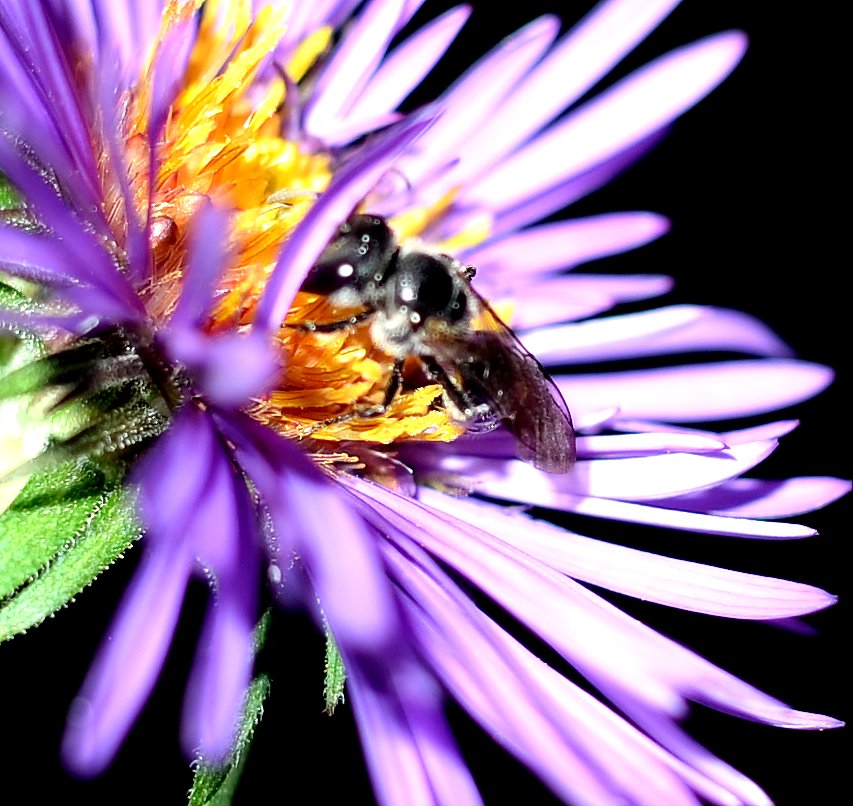
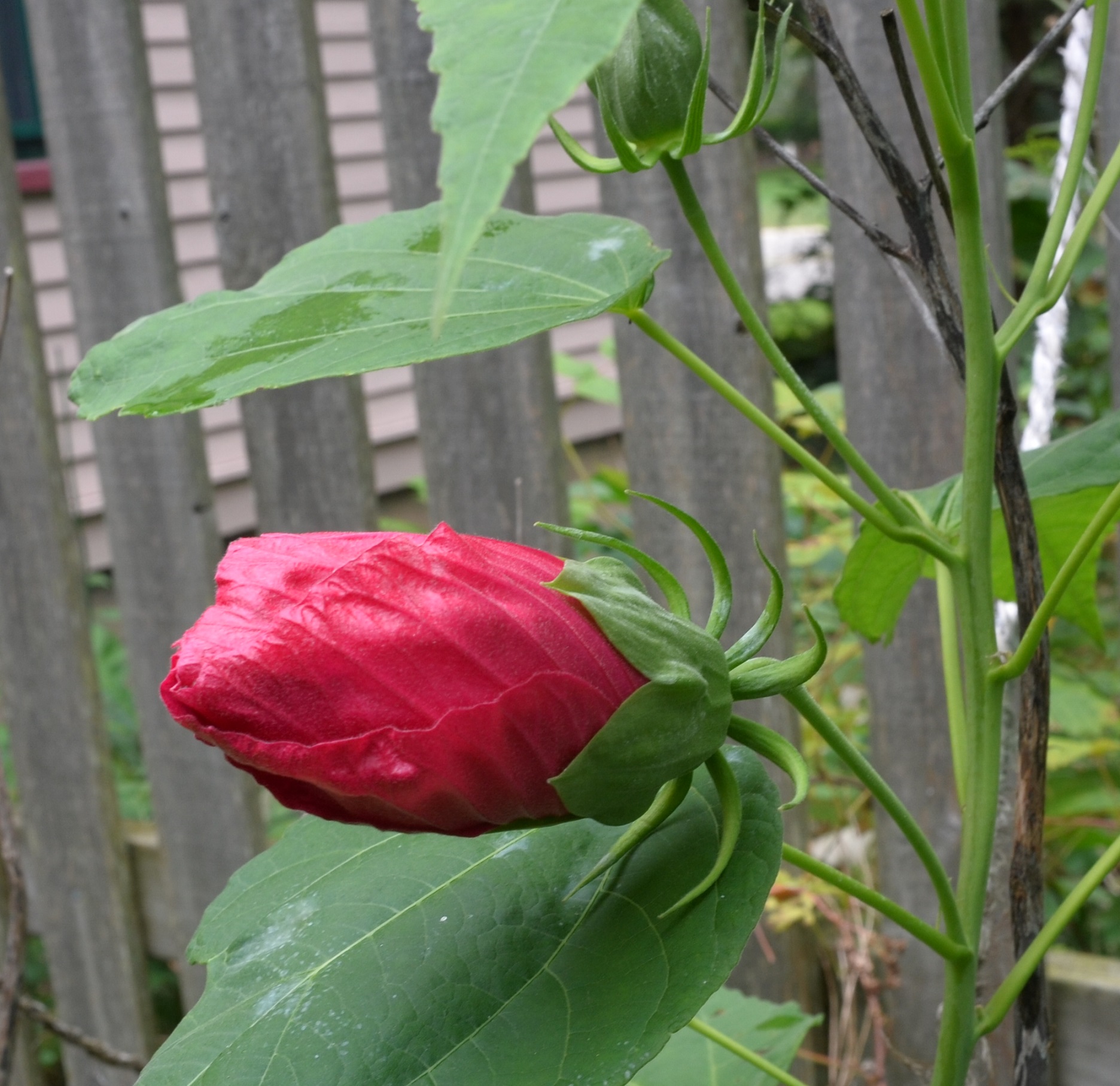
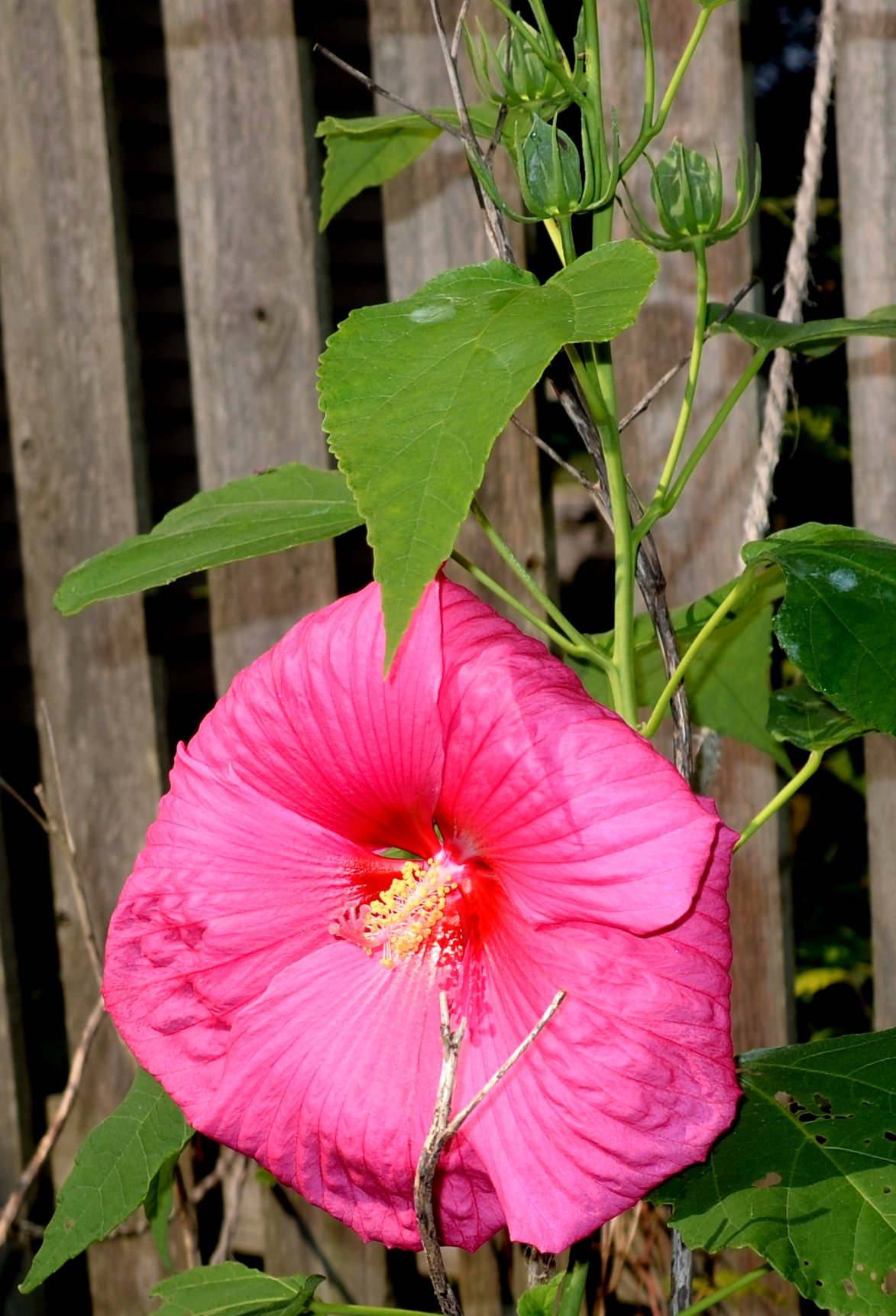
The week was a mixed bag of all sorts of seasons. First warm and humid, then three days of cool springy weather, then a couple of very nice days. In those two days, the giant hibiscus bloomed. The blossom is at least 8 inches across, maybe more. The purple asters are shyly opening, and the goldenrod is also beginning to open in sunny spots. I hear that next week will again be in the 90s (F)/ 30's (C). I will have enough to do inside for that period, never you worry. I've spent the last few days trying to straighten out my wasp photos. I think I'll show you how far along I am - this far and no farther.
Remember that there is information in the name of the file for each image. You can see it by mousing over the image - look at the lower left of the screen.
Or you can click on the image to get to the (usually) larger image. Then the info is displayed in the address line above. If the image has been cropped
so that clicking on it doesn't result in a larger picture, you can always hit control plus at the same time to increase the size.
Remember that social wasps (ones that build nests of mud, pulp, or underground) come in three flavors: two kinds of females: queen and worker; and males. They differ not only in size but also in pattern. One hint (not always true) is that if the antennae are curved or bowed, the owner may be a male. The females hold theirs a bit straighter. These first two demonstrate that. The first two are common aerial yellowjackets, the first a worker (an infertile female) and the second a male. In picture 2, you see an orange-brown patch (you only see one side, but it is roughly symmetrical), which threw me off for some good time because some of the wasps naturally have this color. I was told by Bugguide that it is an anomaly! I spent many hours looking for a wasp with that feature, only to learn that it isn't a feature but a bug. The third one is an Eastern yellowjacket, and I only saw one of those, a queen.
 8 29 15 5.jpg)
 male- 8 22 15 7a.jpg)

In this row, you see the only German yellowjacket I've seen, a worker. Then there are two European paper wasps: let me see if you can figure out which is female and which is male. The clue is above.

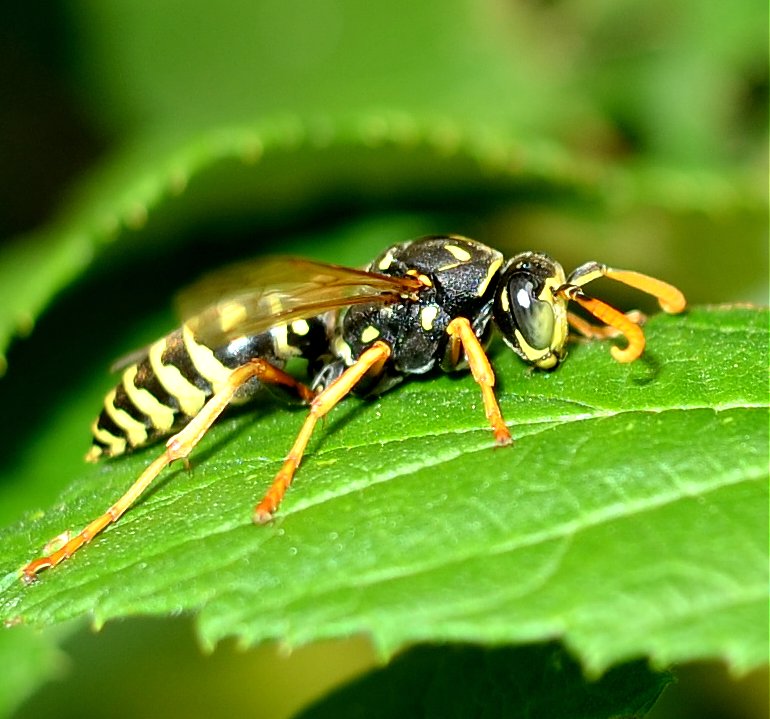
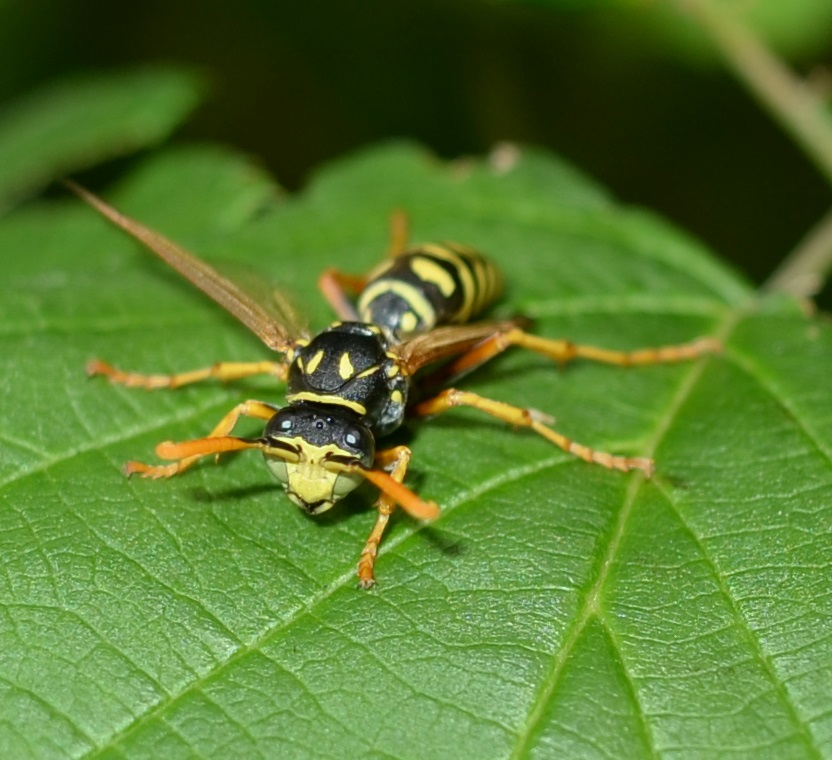
This next pair are so shockingly different that I had to write in to Bugguide to get a hint. This one is a yellowjacket called a ground hornet. Is your brain ROFLIAO? Hint: The I stands for "its". If you need to look it up, the usual configuration is ROFLMAO. One is a male and the other a queen. Which?
Well, in this one, your straight vs curly trick won't work. Hint: the first one is the male. The last little black and white wasp is called Eumenes fraternus and is a kind of potter wasp, that is, one that lays its eggs in a clay "pot".
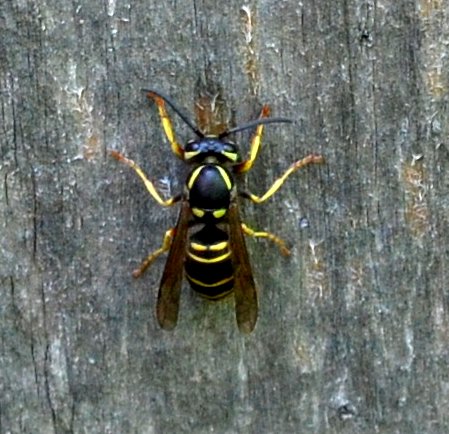

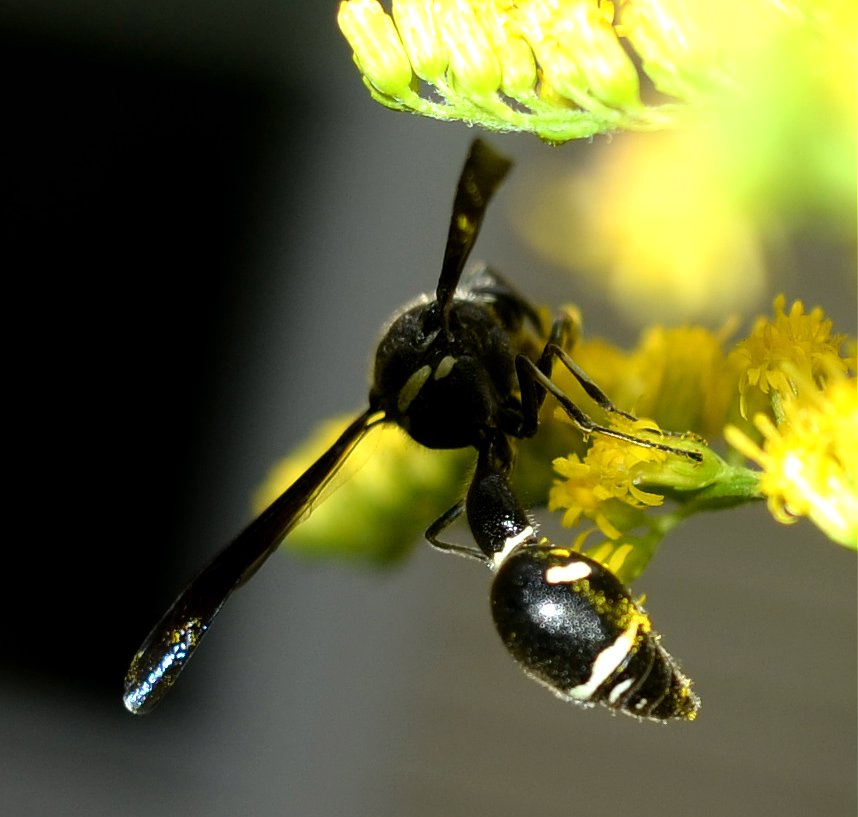
Not only are the wasps hard to distinguish, but they're hard (for me) to tell apart from bees. These next three are bees, even though at first the posture of the first one seems more wasply. The next is the full-size green sweat bee, a female, as I recall - the males wear black and white stripy pants. The next one is a very small bumble bee mimic - sorry to say, it is hard to tell them apart from a picture where they all look the same!
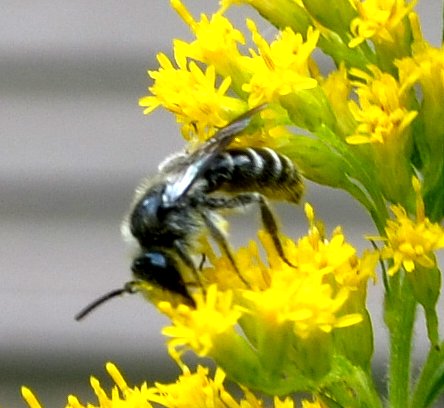
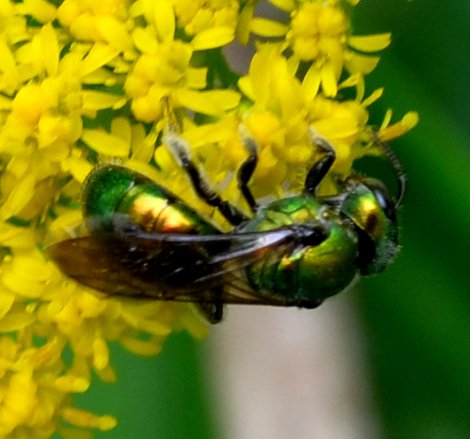
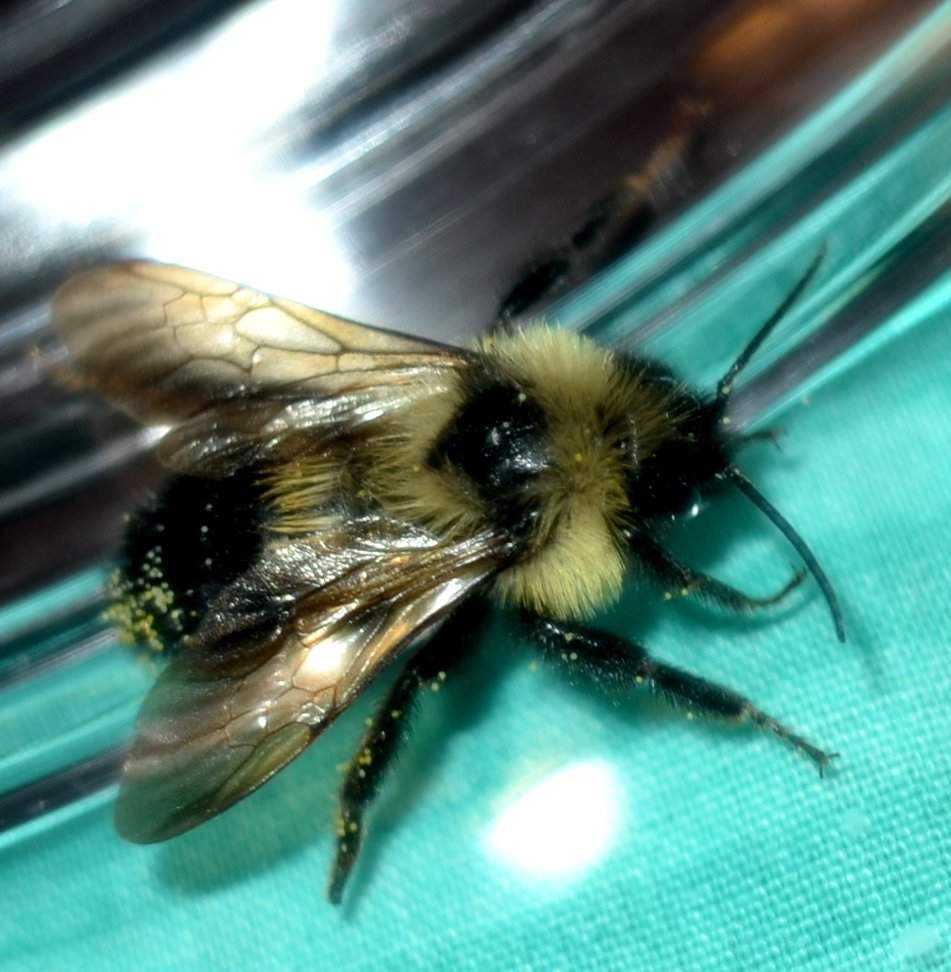
Since I didn't see a single ichneumon this week, that was that for the hymenoptera. There was no dearth of fascinating things though. Oh, let me start with the caterpillar situation. The baby imperials grew so fast and are now both fat and long, about the size of my middle finger. Here is my favorite, little greenie. It came out of its last moult quite dark, much like all the others. Here you can see that with flash greenie is that lovely dark green. But when I applied flash the picture came out quite brown. They are producing so much frass now that I have to shake out their boxes three or four times a day. I do believe that in a couple of days they will begin to show signs of wanting to pupate. From what I've read, they won't spin a cocoon, but will try to find some nice leaf litter to burrow into and once they feel safe, after a week or so they will shed the last skin and become a naked pupa. I've already laid in the leaf litter in two large grocery bags (paper, not plastic) and when they are ready (stop eating, purge themselves, don't ask) i'll put them into the bags, 9 in each. (I gave ten of them away to the daughters of a friend, who had done a super job raising luna caterpillars some years back. I now have 18 in all.) The last picture is of a great surprise I got the other night. It is the caterpillar of the Question Mark butterfly, remember I showed you a far-off picture of an adult. Anyway, it was on an elm sapling, their favorite food, another surprise for me. I brought it inside, and kept it in a dish of elm leaves until - surprise again. It had made itself into a chrysalis, which is what butterflies dress in while they turn from caterpillar to butterfly. Since it was in a dish of leaves, it had had nothing to hang upside down from, but I (carefully, I hope) super-glued its little end pole to the top of a plastic jar and burned holes in the jar with a metal prong in the gas flame of the stove. (Before putting the top back on!)
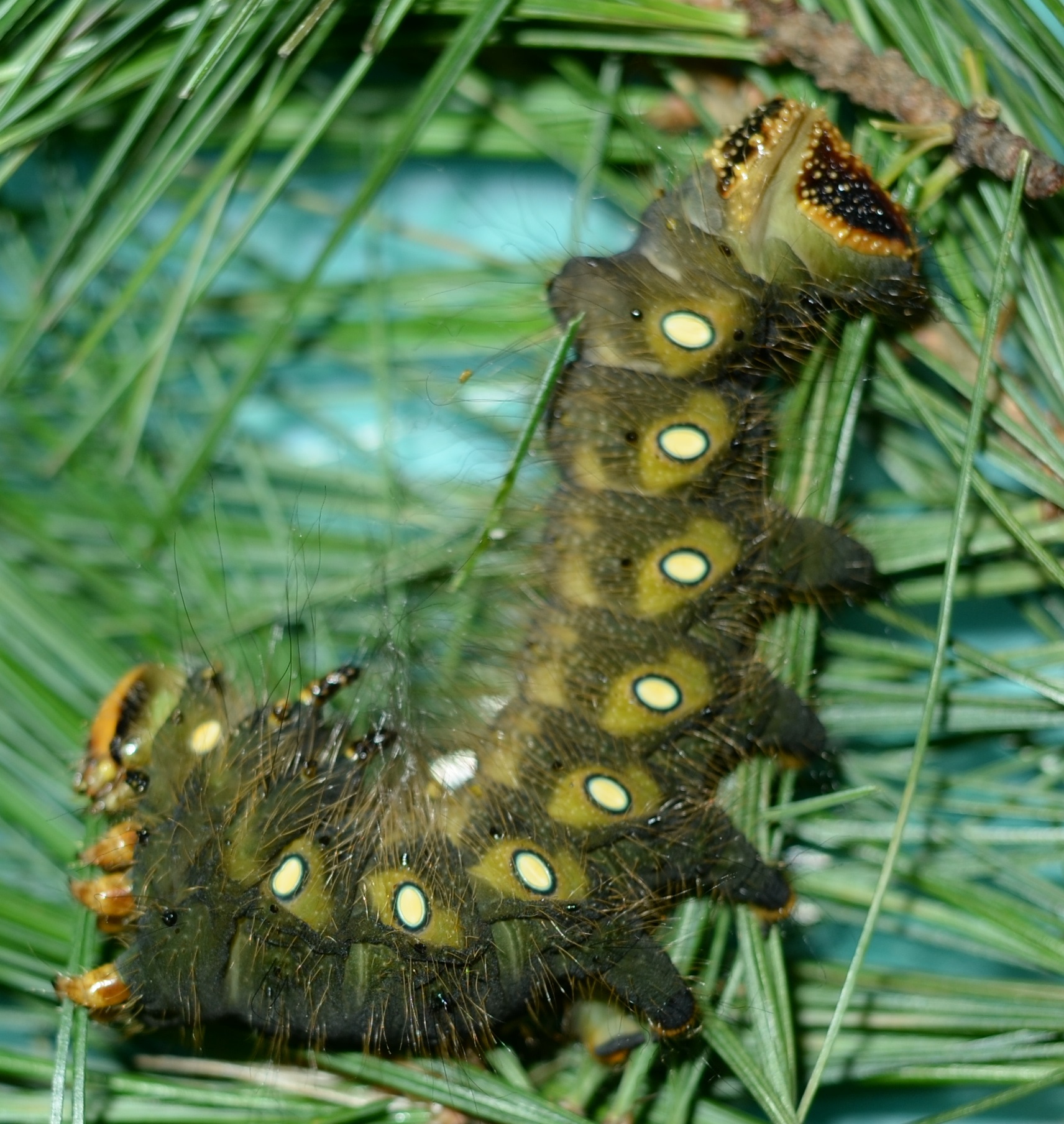
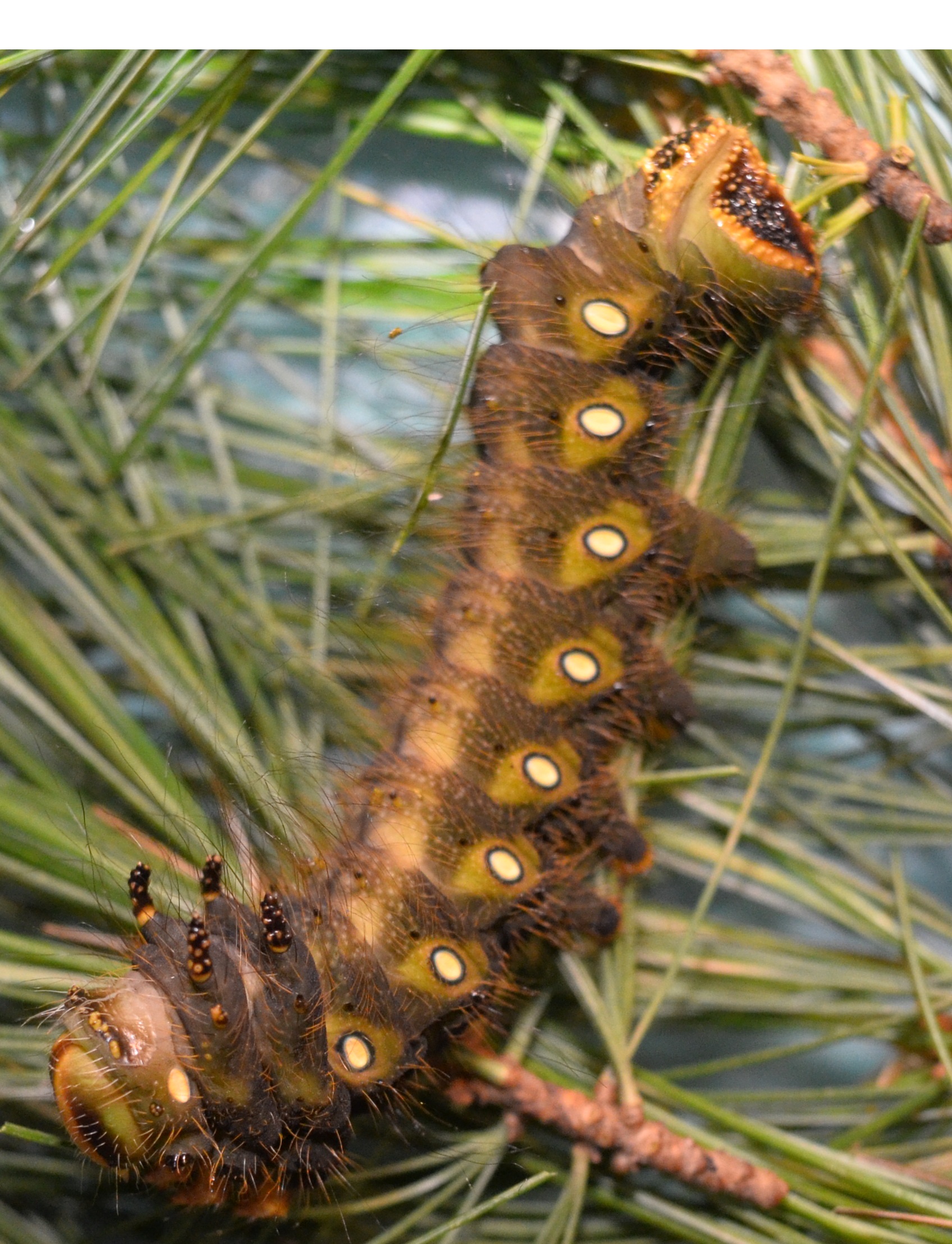

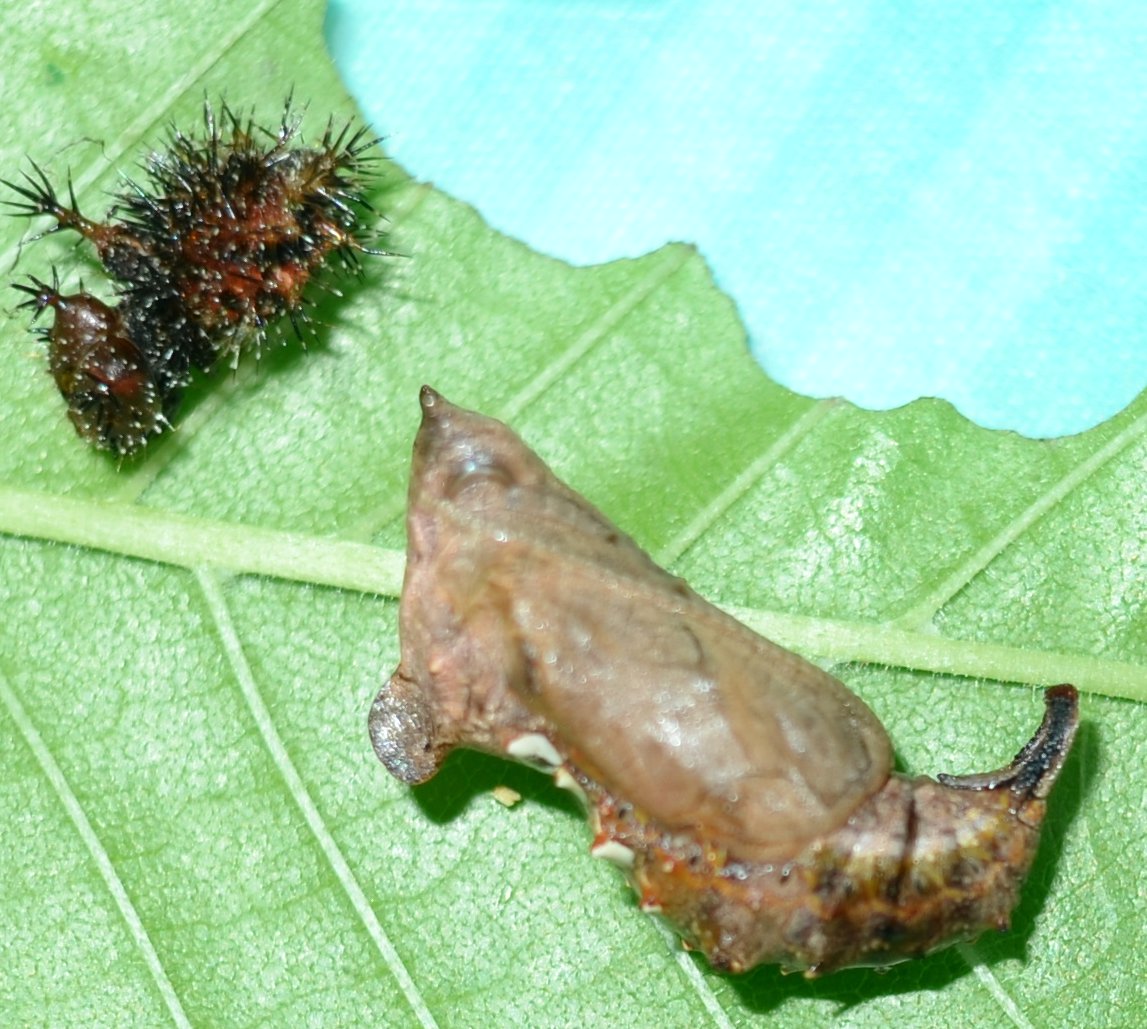
A couple or three of other caterpillars. The first is unknown to me but pretty - here it is exuding some liquid, who knows who for? Second, that hickory tussock moth caterpillar, has had two accidents. Somehow the top part of it was bitten (?) off but it survived. Then another pruning, and it was still alive for awhile. OR it was shedding a part of its skin (?) each time. My neighbor, Pat Messer, gave me this picture of a tufted caterpillar on milkweed. By now you must know that it is called the milkweed tussock moth caterpillar.
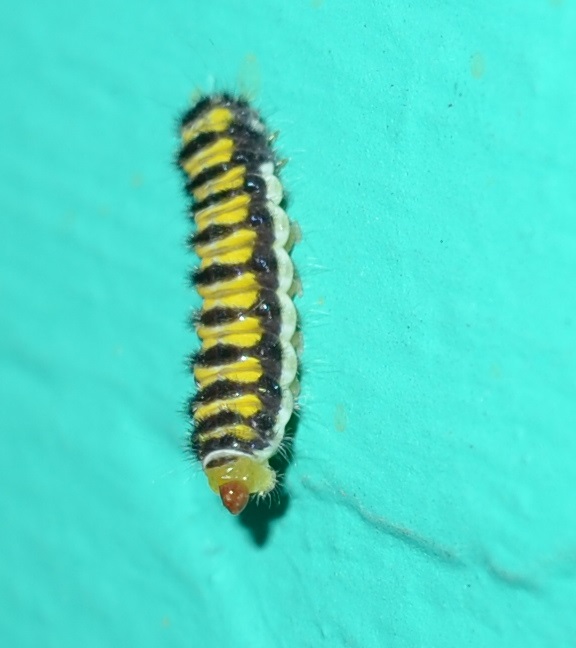 il
il
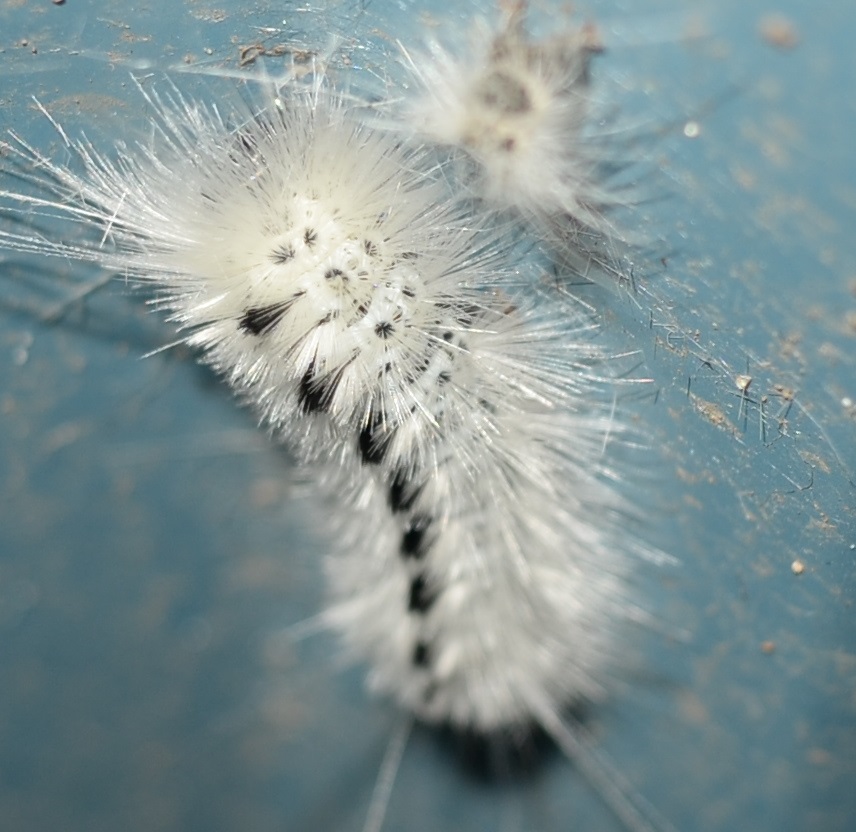
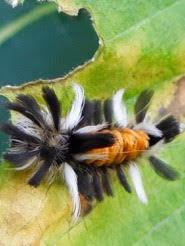
I don't know if you remember my lament of last week that I'd stopped seeing the buffalo treehoppers. Well, this week I began seeing them once more. Here is that emerald green one almost invisible on that green leaf and stem, and shortly after spotting that one, one of the brown ones showed up on an old raspberry cane. It looks quite a lot like the dead leaves coming off of various plants that have gone passé. Never give up on the buffalos!
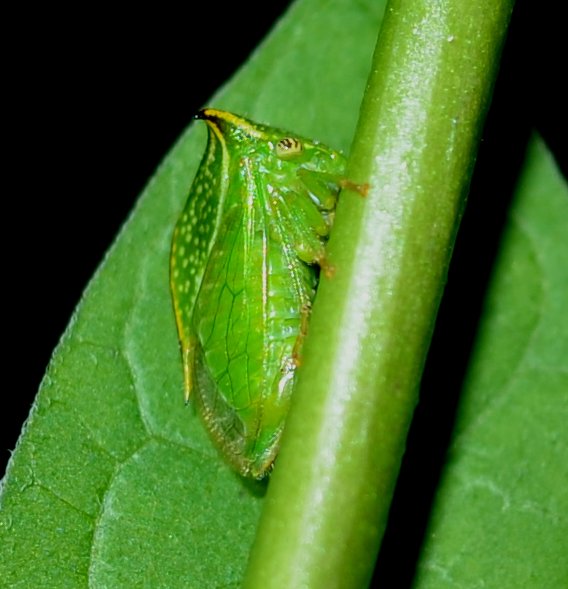
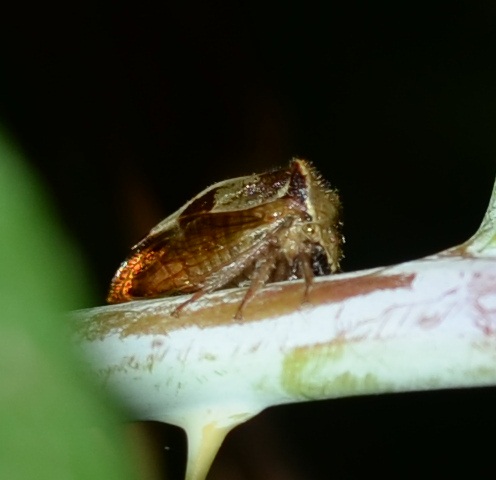
The leafhoppers were also out and about. Here is a new one, soaking up the rays of orange from a zinnia. We've seen the next little Japanese leafhopper before, but I love its subtle blue and its green eyes. That spittlebug is multiplying: here it is in a position so we can see that striped headgear nicely. Bug four is a plant bug of the genus Lygus. This is a large family of bugs of various sizes and shapes, but this is one that frequented the goldenrod all fall last year.
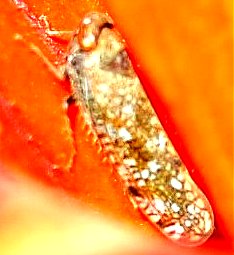
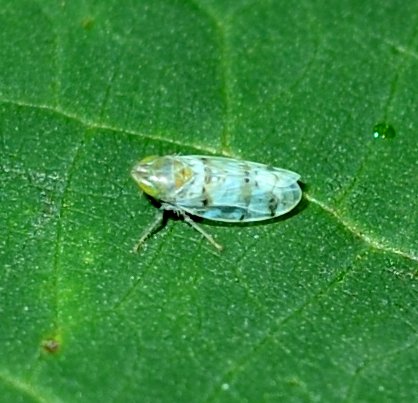
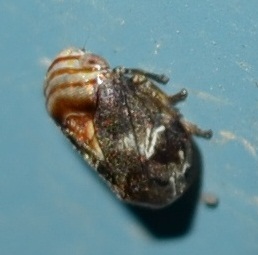
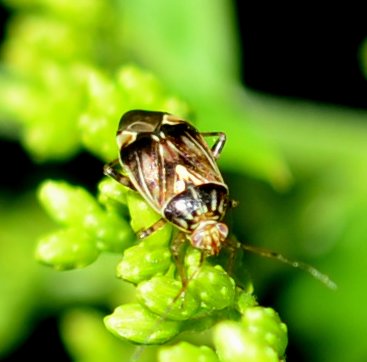
What a strange week! The only beetle that I saw was this little so-called "redbud bruchid", which is appropriate since the host redbud stands right over this aster. But there were a few stinkbugs. Here are two new ones, or maybe one from two angles.
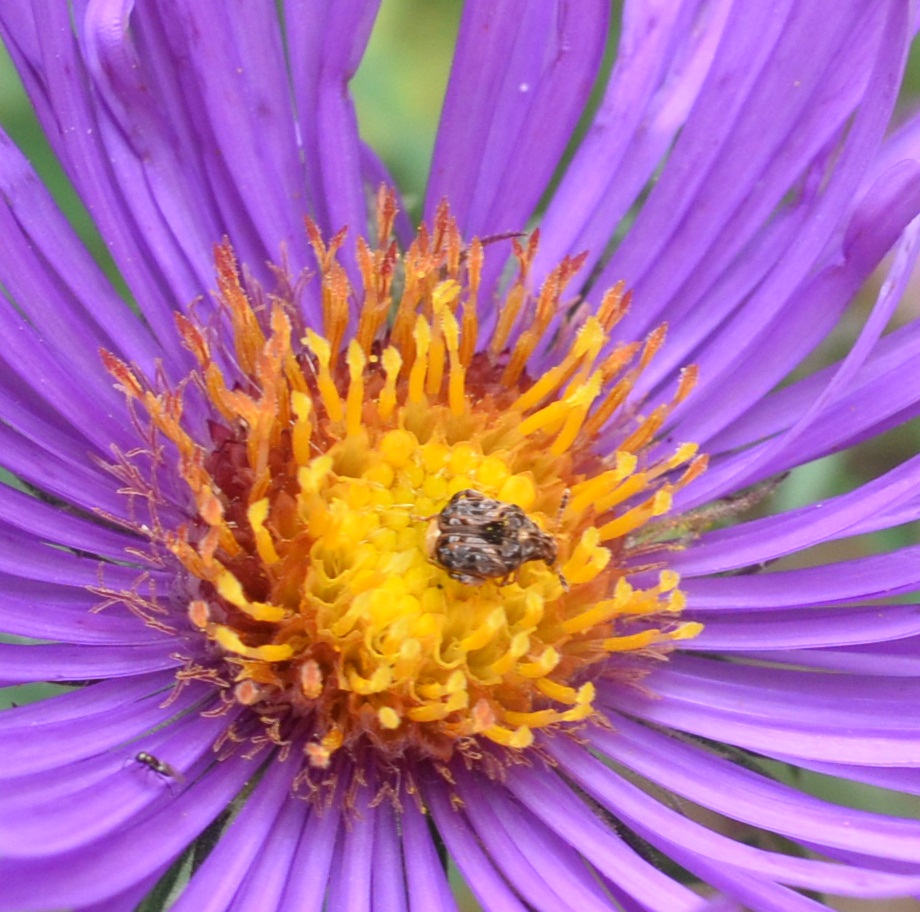
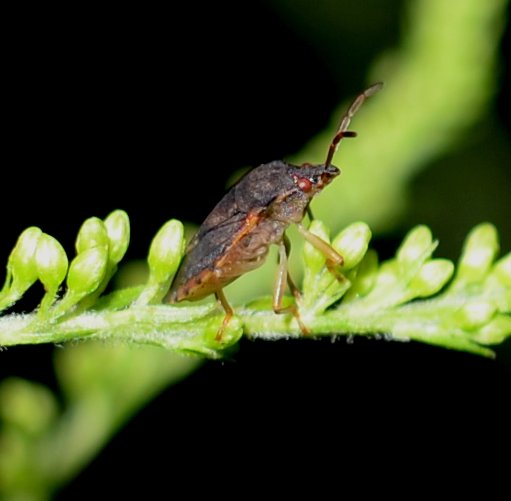
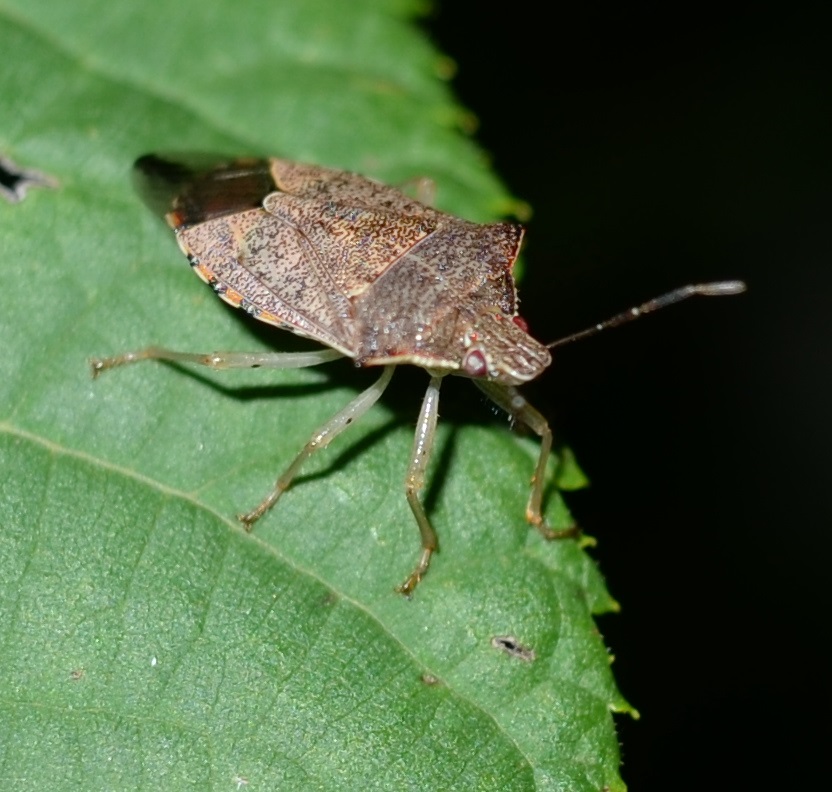
Flies seem never to be out of season. Here are a few. Doesn't this first one look like a brave explorer about to circumnavigate the garden? or maybe watching his beloved fly off into the sunset? The next one is a spotted-wing relative, I believe. Then we have one of those little hover flies that have been with us since early spring. The next one fooled me for a while. I had been trying to photograph a wasp when all of a sudden a new one flew past the trumpetvine and lit on this phlox flower. It is one of the ones that looks so like a wasp - the black and yellow theme is perfect. The huge "fly eyes"
gave it away though.
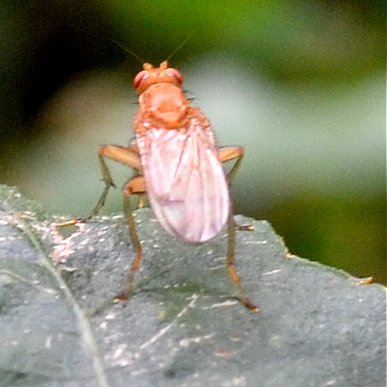
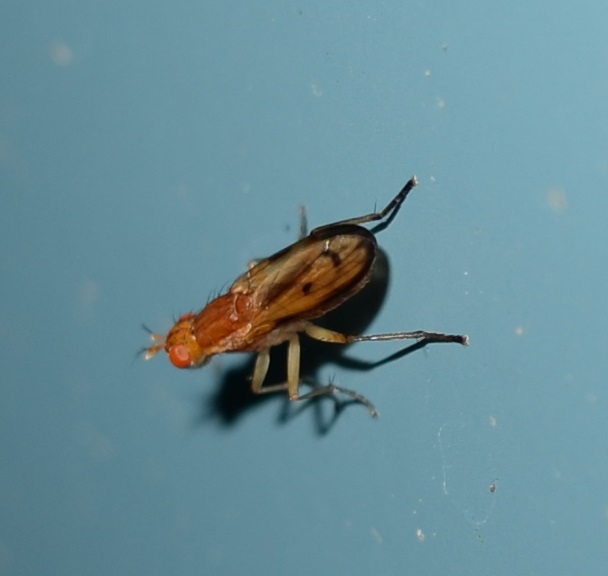
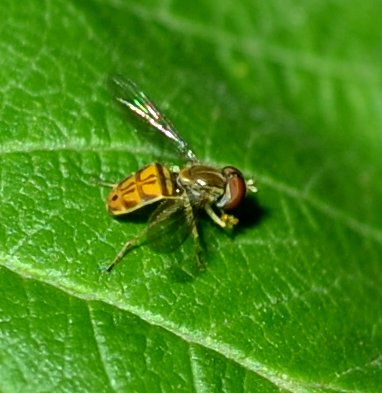
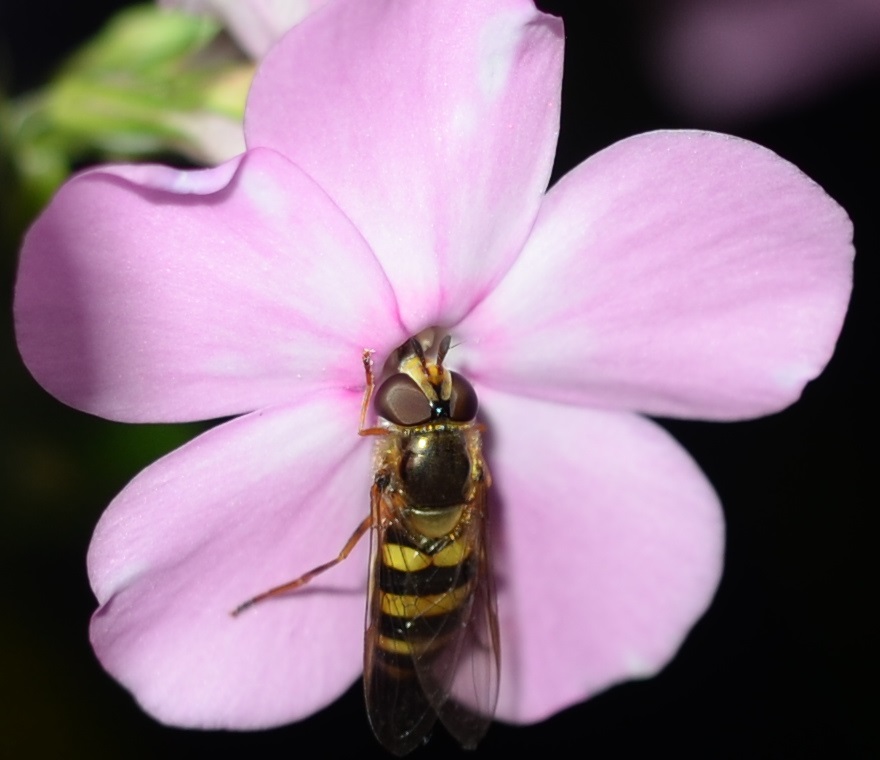
I know you've seen this one before, but while we were on the topic of flies mimicking other things, here is the fly that looks like a moth. This ethereal little white fly was on the shop wall when I went out, and on the asters here was this tiniest tiniest fly, probably a midge but sporting an amazing red tail. Note: (added 9/17/17): Based on a couple years of experience, I believe the red bumps on the tail of this midege are a kind of red parasitic mites. This next picture is terrible but I wanted you to have the same fuzzy impression of this brightly colored fly(?). It did not give me a second chance. The last one is a little better photographically, and what a curious face. It reminds me of "Spy vs Spy".
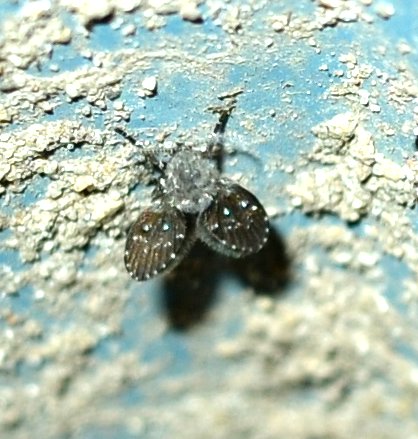
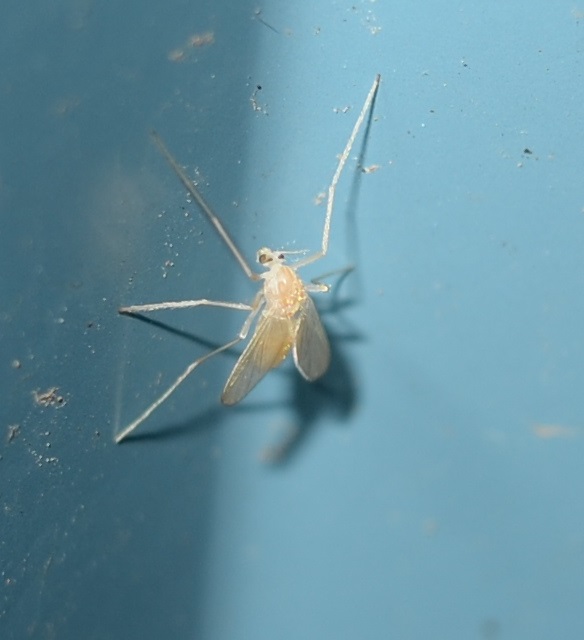
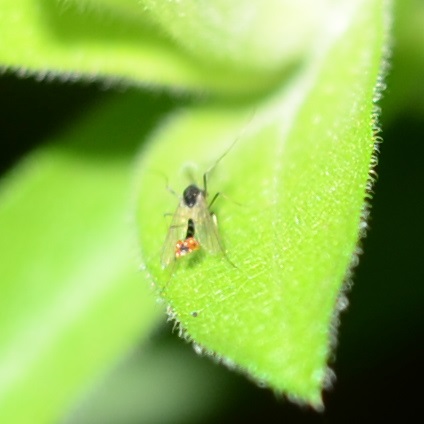
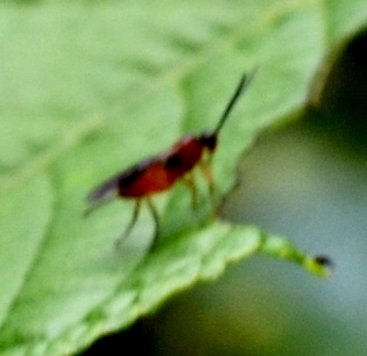
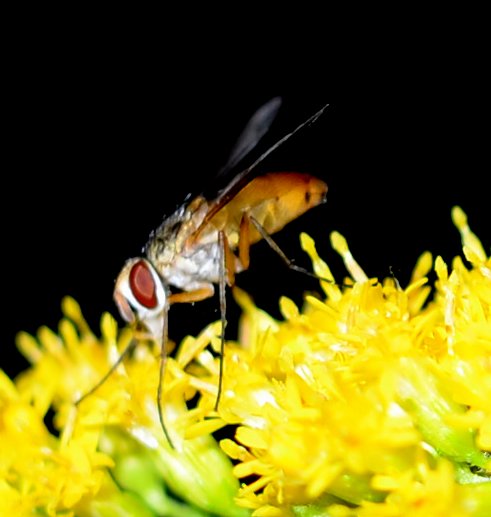
What I just skipped was the picture-winged fly and the scorpion fly that we have seen so many of lately. There were also a couple of crane flies that you have seen many times before. But let's wander over to the coneflowers and see what is hiding in there? What a tiny inchworm, or "looper". It has been moving from flower to flower, so I have to look each day for its most recent favorite. Of course, another baby crab spider, but it does seem to have grown a bit - its features are getting clearer and clearer. The markings on the abdomen are common for the Northern crab spider. Unfortunately for all of you who love the spiders best, they must have found very good hiding places. I'm sorry for that. But there are a few that make little silk nests and rush out to see who has just disturbed them. Here is one of them.
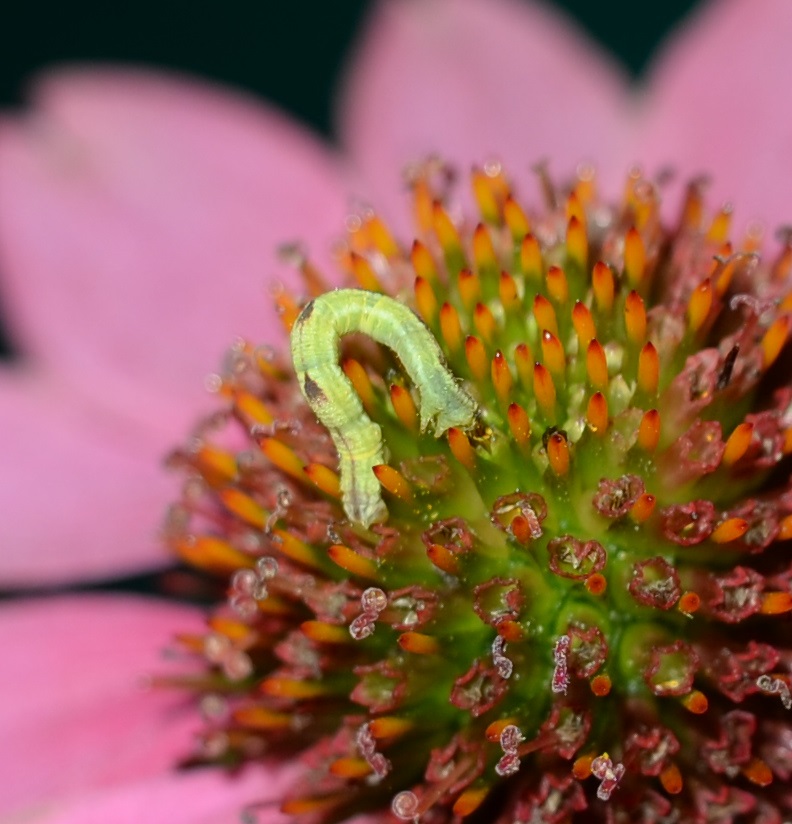
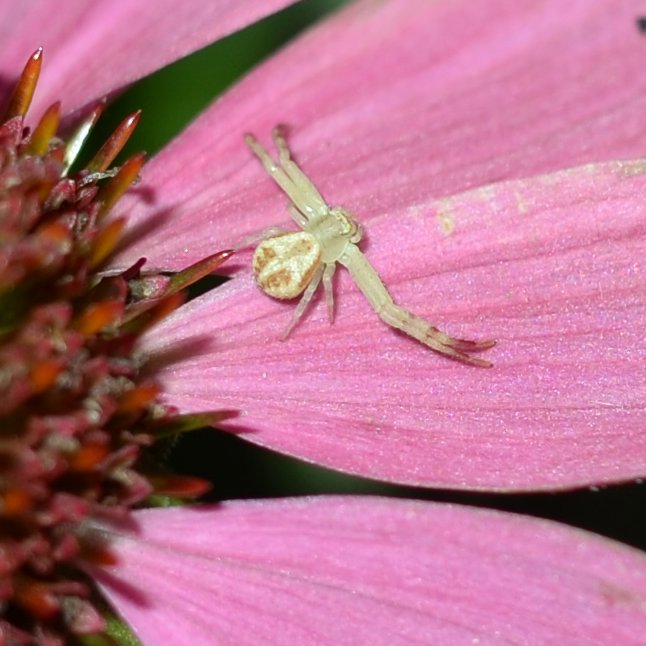
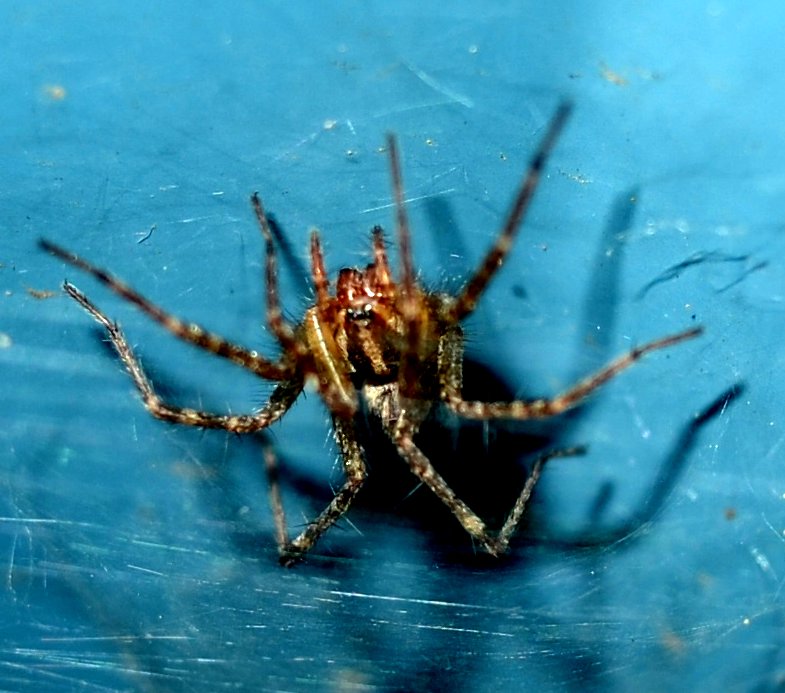
So we come to the end of another week and look forward to finding new things every day next week. It is still a source of curiosity that just when you think you haven't accomplished much in the way of observations, something wonderful appears under your eye. That's how I spotted the spiky red and black Question Mark caterpillar - it somehow stood out in the dusk! Well, I'm quite sleepy now. It's Saturday night and I'm not going to be any more coherent - and besides I think we didn't skip too much. See you next week!
Back to August 23
On to September 6
Back to 2015 menu
Back to main menu
copyright Martha O'Kennon 2015






 8 29 15 5.jpg)
 male- 8 22 15 7a.jpg)














 il
il






















